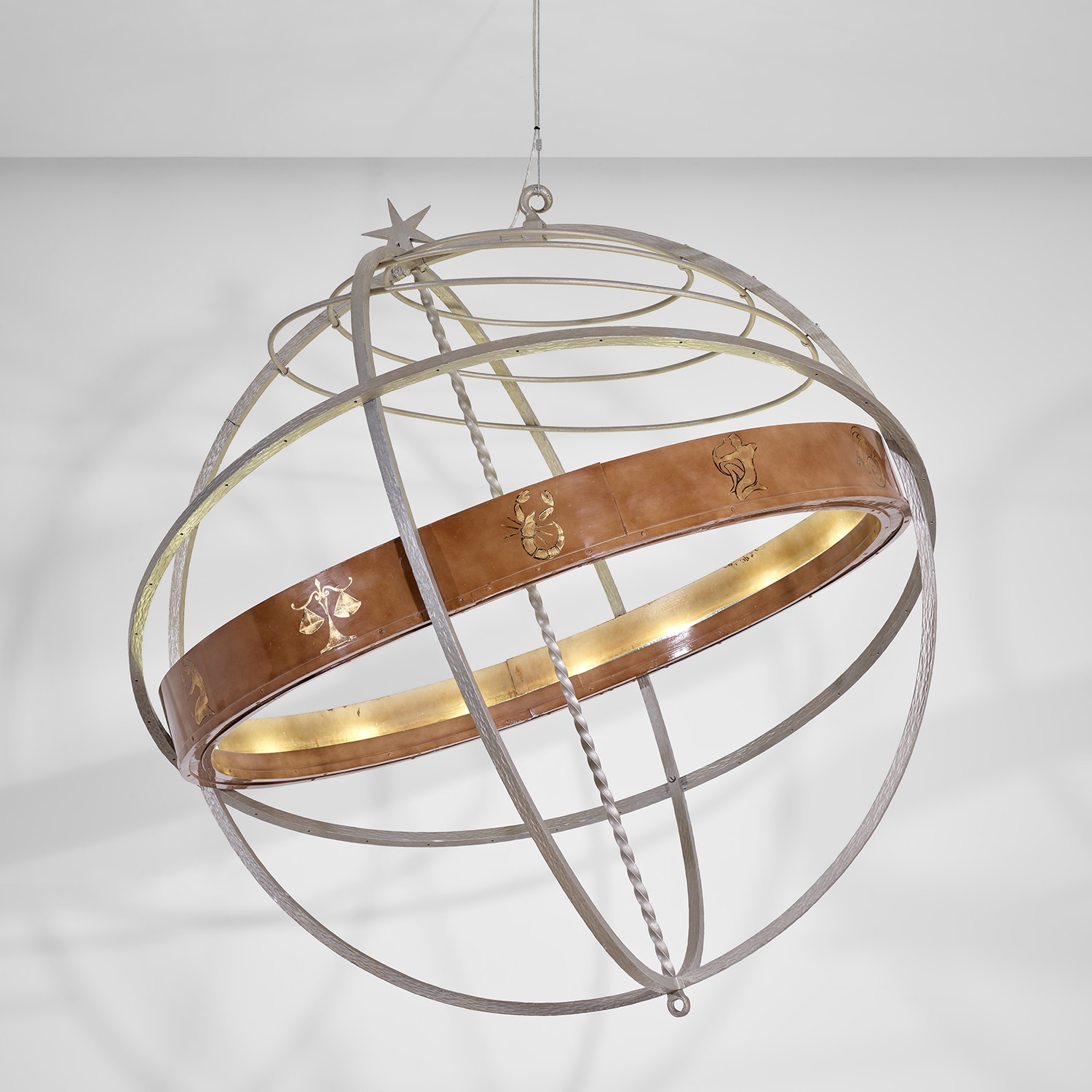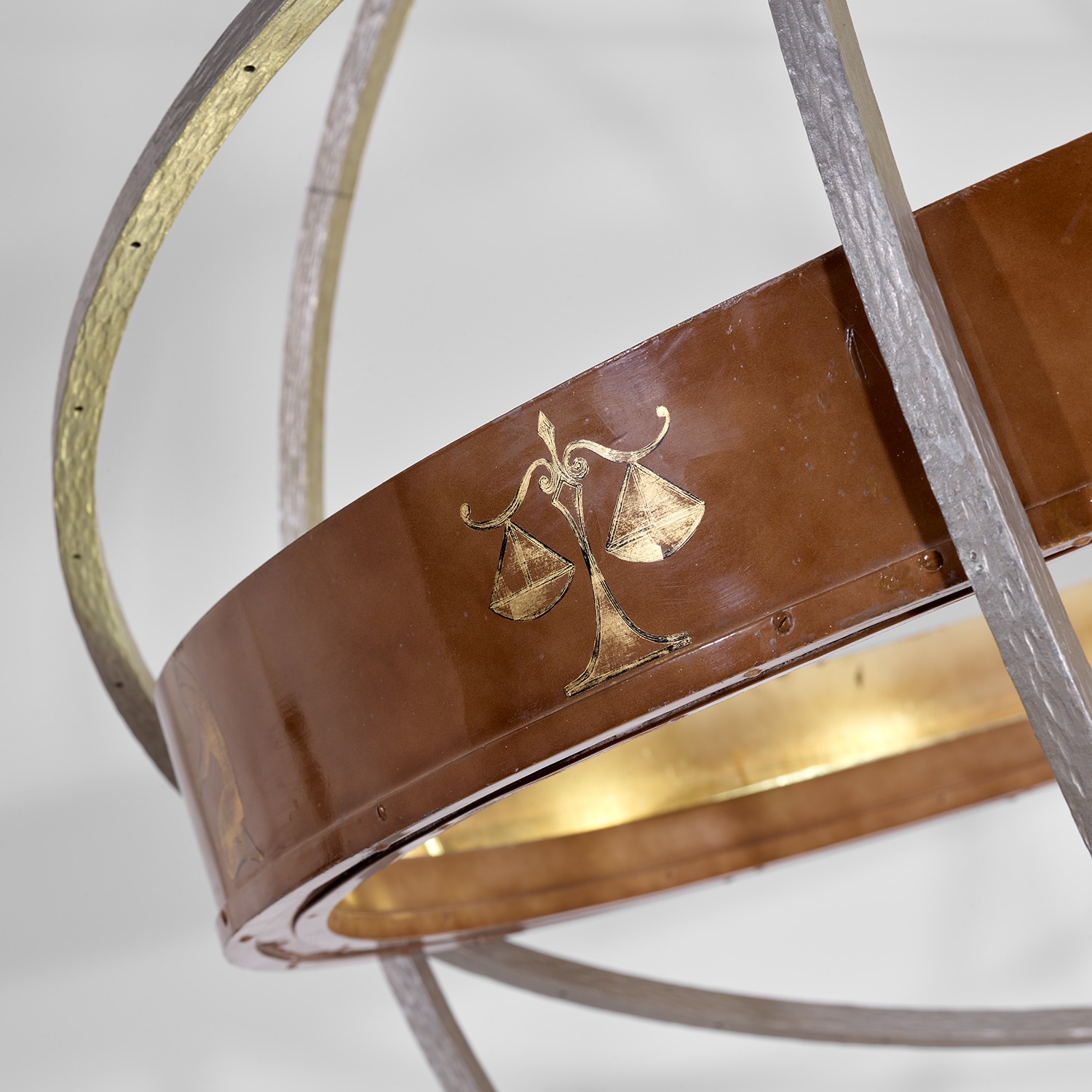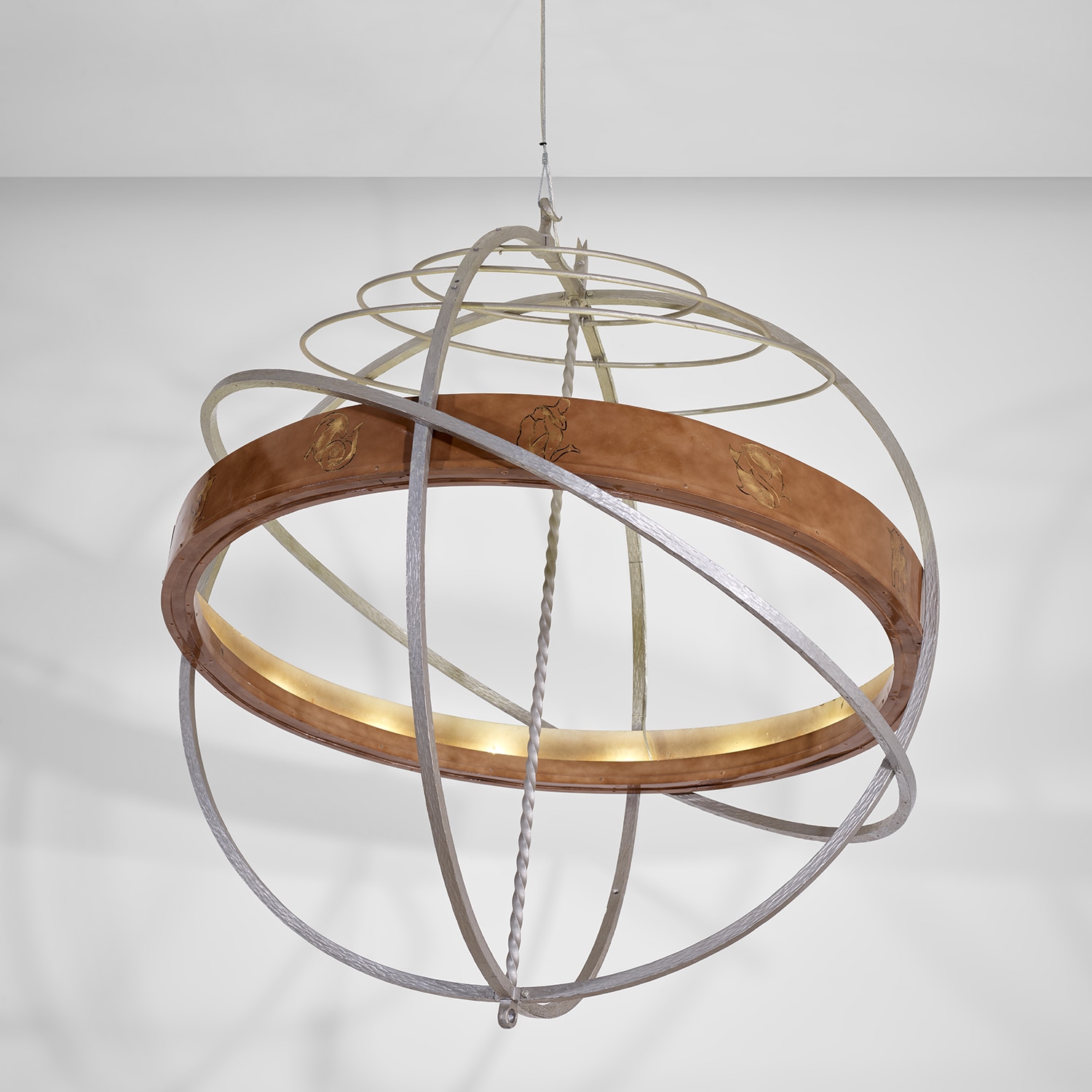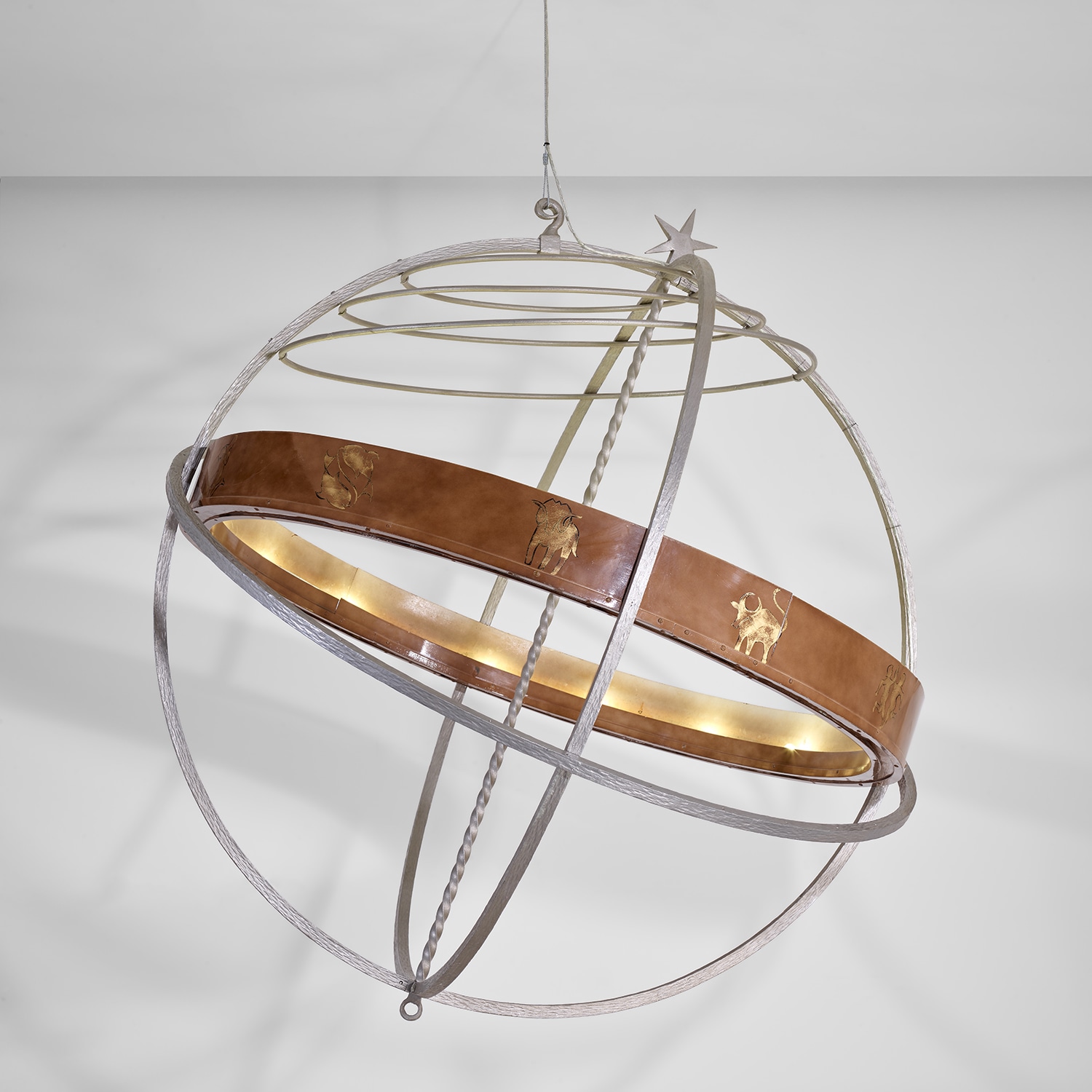









29
Marcel Coard
Monumental ceiling light, from the Paul Cocteau residence, Champgault
Further Details
Full-Cataloguing
Marcel Coard
French | B. 1889 D. 1974Like many other furniture designers of the Art Deco period, Marcel Coard began his career catering to the traditional tastes of his customers, only making unique and creative pieces for certain clients. His furniture design transcended the historicism and modernism that dominated the Art Deco style, and ultimately reflects the concepts and aesthetics of the early twentieth-century avant-garde as much as it does a particular decorating style.
Coard is most famous for the furniture he designed for the great couturier and patron of the arts Jacques Doucet. Widely published, Doucet's interior has come to define modern collecting practices and in particular was a formative inspiration for Yves Saint Laurent and Pierre Bergé. Coard’s work was re-discovered in the historic 1972 auction of Doucet's collection, which achieved previously unrealized results in the still nascent Art Deco market.